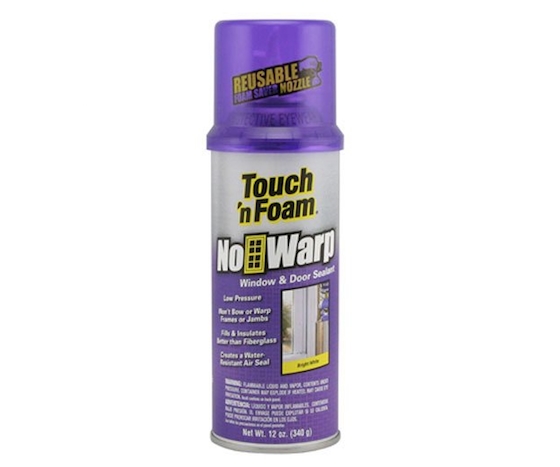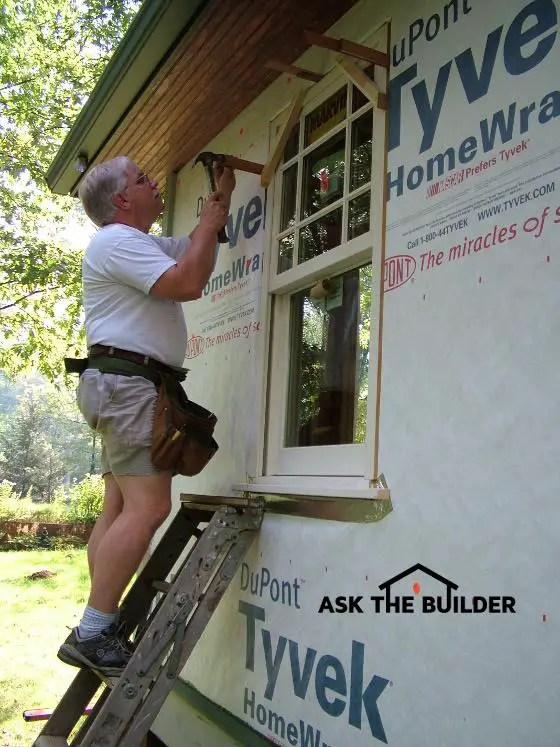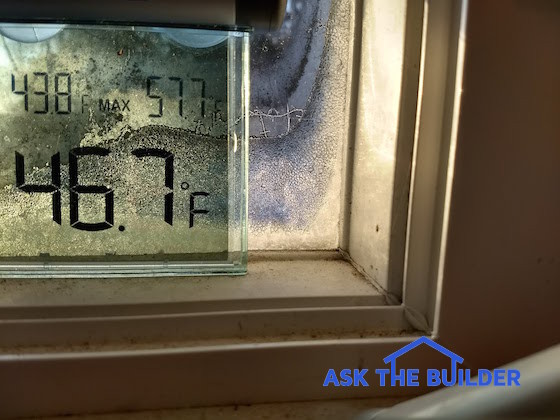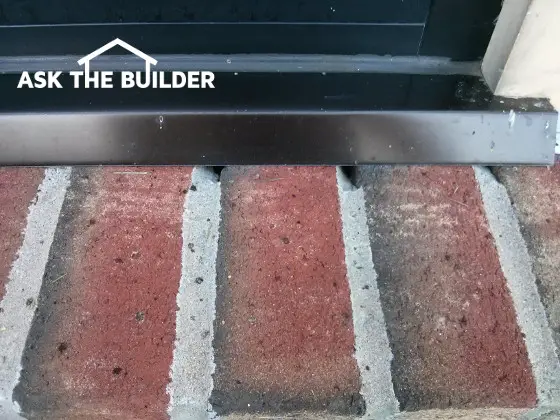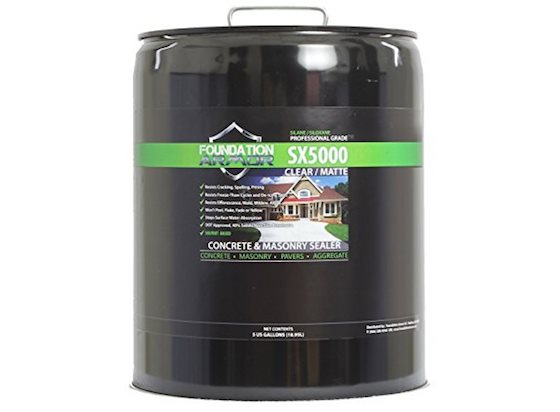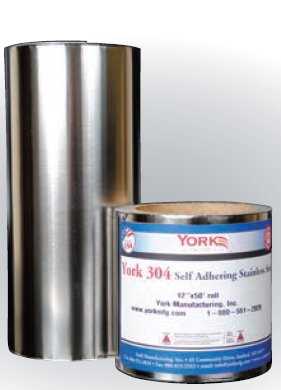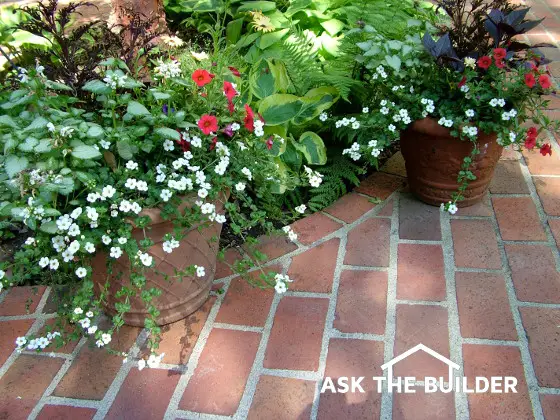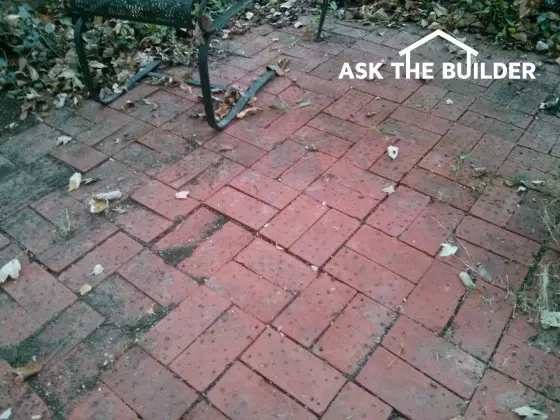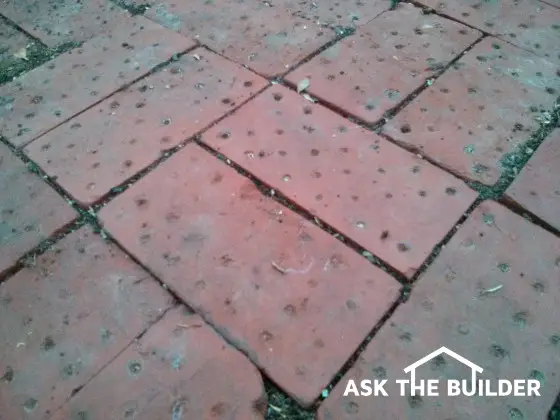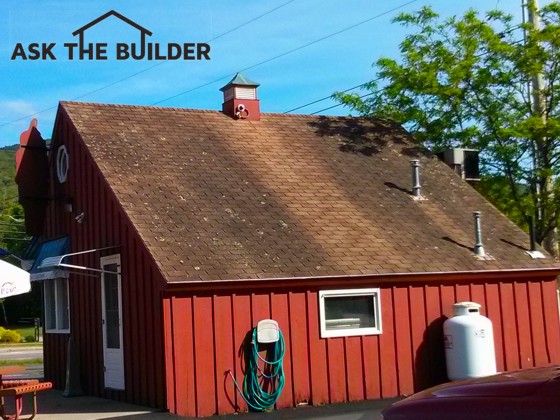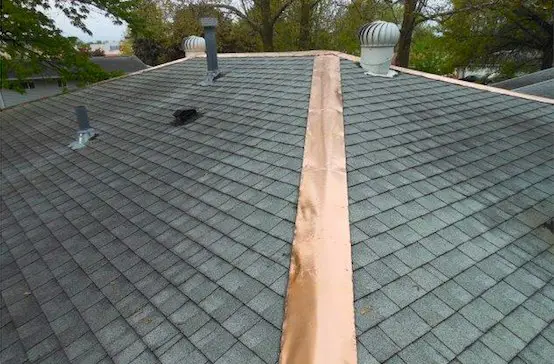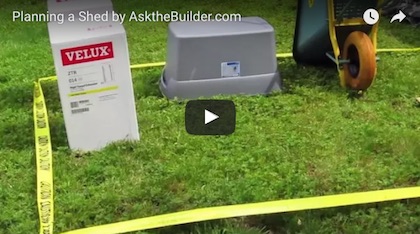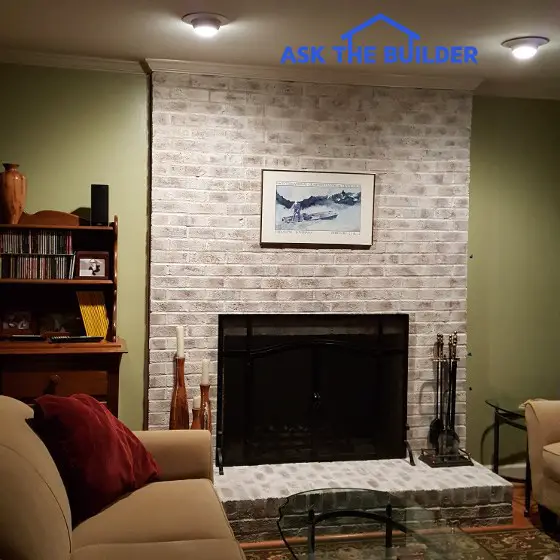
Here's the fireplace once finished. Maggie and her daughter did a magnificent job and the hydrated lime will look this good for decades. Copyright 2017 Tim Carter
"When done right, whitewash produces a brilliant white finish that bonds tenaciously to any masonry or coarse wood surface. You can add dry pigments to the whitewash to create unlimited color possibilities."
Whitewash Fireplace DIY TIPS
I’m departing from my usual question/answer format this week because I was blessed to have a unique back-and-forth email exchange with one of my newsletter subscribers. I wanted to share it with you as an inspiration to tackle a job at your own home.
Can You Whitewash a Fireplace?
Yes, you can whitewash a brick fireplace or any other surface you'd normally paint.
I’ve been publishing a FREE weekly newsletter for over twenty years and along the way I’ve made quite a few virtual friends. One happens to be Maggie S. who lives in Raleigh, NC. I looked back through my email files and I see emails from Maggie that stretch back ten years.
When I travel on business, I always try to set aside time to do face-to-face meet-ups with my readers but I’ve not yet had the pleasure to meet Maggie. After you read this story I think you’d like to meet her and her daughter too!
Free & Fast BIDS
CLICK HERE if you feel you can't do this job and want FREE & FAST BIDS from local painters that can apply real whitewash.
Whitewash a Red Brick Fireplace
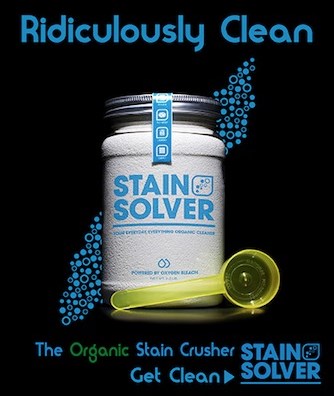
Stain Solver is MADE in the USA with USA ingredients that are food-grade quality. CLICK THE IMAGE to order some NOW.
Less than two weeks ago Maggie reached out to me with a simple email. She said, “I am planning to whitewash (true whitewash, not paint) my fireplace brick. To clean it first, can I use Stain Solver? If so, what is the process?”
I answered her question telling her to mix the Stain Solver powder with hot tap water. Stain Solver is a certified organic oxygen bleach that does a remarkable job of getting rid of smoke and soot stains on fireplaces. It also gets rid of regular dirt and oils.
It's best to put one cup of powder in a gallon of water and stir it until it dissolves.
It can take up to two minutes to get it to dissolve. Don't skip this step because you have to put the solution into a hand-pump garden sprayer to saturate the fireplace brick. If you don't dissolve the powder, it can clog the tip of the sprayer.
Just a few months before, I had shared with my newsletter list that I was in the process of revising all my past columns on my AsktheBuilder.com website. Three of the columns I had recently revised were about whitewashing.

CLICK this image and listen to the first call on the podcast. I talk to Vic about how he can use a concrete overlay to save THOUSANDS of $$$. Copyright 2018 Tim Carter
Maggie must have read them and decided it was time to transform her dated living room fireplace. The links to them are just below this photo.
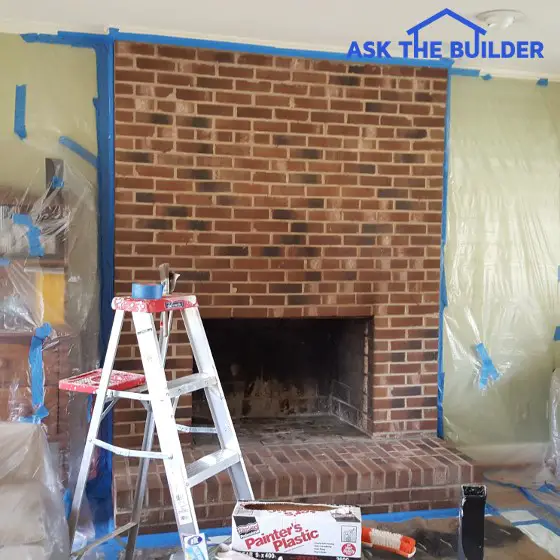
Here's Maggie's fireplace before she started the whitewashing. Copyright 2017 Tim Carter
What is a Recipe for Whitewash?
There are several recipes for a whitewash. I list all of them in another past column below.
Here are the past three columns I've written about the true whitewashing process. Do NOT try the short-cut method using latex paint. That's NOT whitewashing.
Whitewashing Brick
Whitewash Recipe
Whitewash Tips
Is the Whitewash Advice on Cable TV and Pinterest Correct?
The advice on cable TV shows and Pinterest, based on the emails I receive, is wrong. Most people in those two venues suggest using latex paint as the whitewash.
Evidently, there’s been a trend of cable-TV hosts and photo-sharing websites that have been abusing the whitewash process. These people are using paint they thin down with water to create the look one might achieve by applying real whitewash.
Whitewash is a Timeless True Method
My past columns describe how I used the age-old process of whitewashing on one of my jobs. Not only did I share the process of applying it in the columns on my website, but I also have the exact recipe I used. It’s caveman simple to mix and apply true whitewash.
CLICK HERE if you feel you can't do this job and want FREE & FAST BIDS from local painters that can apply real whitewash.
What is the Main Ingredient in Whitewash?
Hydrated lime, a powder, is the main ingredient in whitewash.
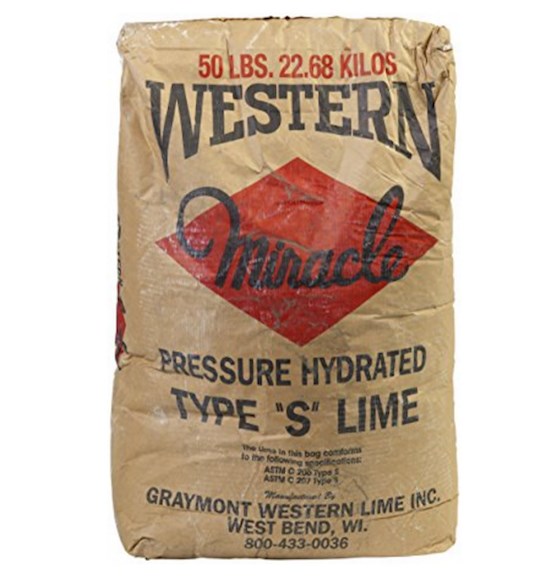
This is excellent hydrated lime. It's a fine white powder and it's going to look great on your home. CLICK THE IMAGE TO ORDER SOME RIGHT NOW.
Maggie knew it was far better than applying thinned paint. True whitewash is just a mixture of hydrated lime, salt, and water.
CLICK HERE to purchase hydrated lime. Even if the bag says it's for use in garden soil, it's the right stuff.
When done right, whitewash produces a brilliant white finish that bonds tenaciously to any masonry or coarse wood surface. You can add dry pigments to the whitewash to create unlimited color possibilities.
I answered Maggie’s question about Stain Solver. It’s one of many powdered oxygen bleaches you can purchase at grocery stores or online to deep clean just about anything. Maggie knew she’d get the best bond if the brick was clean. She told me the brick had never been cleaned in all the time she’d lived in the house.
The back and forth email exchange happened after she and her daughter finished the project. Maggie was so pleased with the job she shared a series of before, during and after photos.
How Do You Apply Whitewash?
You can apply whitewash with a stiff brush or paint roller.
I decided to probe and ask her how she adapted my instructions to make it work at her home. Maggie was only too happy to share her experience.
The first thing she mentioned was she wished she had worn rubber gloves while doing the job because her skin got abraded wringing out the old coarse rag she used to dab the whitewash. What’s more the hydrated lime is very alkaline and can cause significant irritation.
What are the Best Whitewash Brushes?
The best whitewash brushes are those used by master wallpaper hangers. CLICK HERE to see one I love.
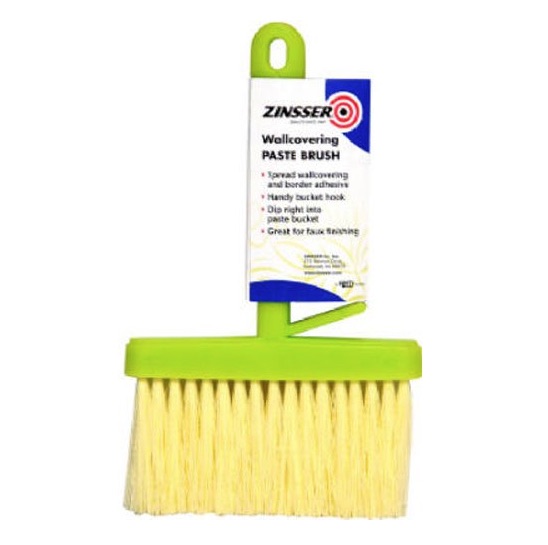
This is the perfect brush to use to apply whitewash. CLICK THE PHOTO now to have it delivered to your home.
I was very curious about how she applied the whitewash and how she achieved her mottled look. Maggie and her daughter used two brushes, one an angled brush for the critical areas where the brick touched up against the drywall walls and moldings and a wider masonry brush for the large open areas of brick.
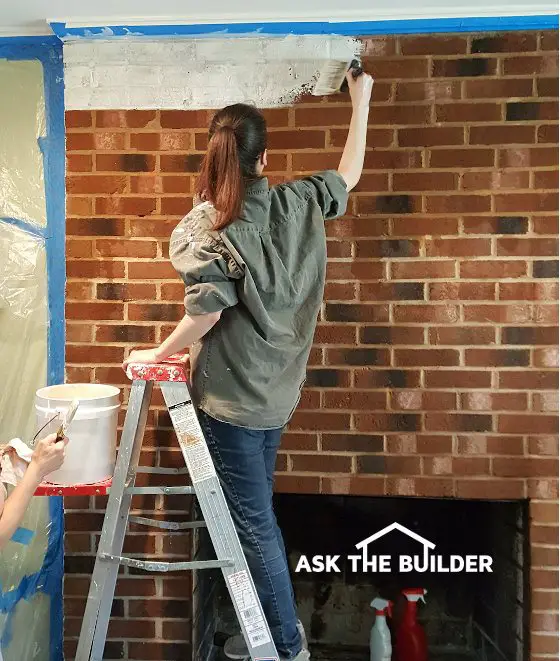
Maggie's daughter is applying the thick real whitewash. Don't use paint like the wanna-bes do. Paint is for losers. Copyright 2017 Tim Carter
Does the Brick Need to be Damp?
Yes, it's best to spray a little bit of water on the dry brick before applying the whitewash. It will bond better.
I had advised her to make sure she spritzed the brick with clear water so the whitewash wouldn’t dry too quickly and set up. She discovered that she could only do a few rows of brick at once and then had to start to pat off the excess material to produce the transparent look she desired.
Should I Work Top To Bottom?
Yes, always work from the top to the bottom so you don't ruin completed work.
Maggie and her daughter used common sense and started at the top and worked down. This was very smart because they knew they would be dabbing and patting the fresh whitewash. They didn’t want to drip any water or whitewash on completed brick below where they were working.
How do You Control the Thickness of Whitewash?
The amount of water you add while mixing the whitewash is one way to contol the thickness of the coating. You want the whitewash to have the consistency of thin turkey gravy.
You can make the patting process easier by controlling the thickness of the whitewash you apply. The thicker you make it, the more you need to pat and dab! What’s more, the whitewash tends to dry to a more opaque look than when it’s wet. I had shared in my columns that it’s always best to whitewash a few scrap brick and let them dry to see what the final real look is a day or two later.

Here's the fireplace once finished. Maggie and her daughter did a magnificent job and the hydrated lime will look this good for decades. Copyright 2017 Tim Carter
Is Whitewashing a Fireplace a One Day Job?
Yes, you can whitewash a simple brick interior fireplace in one day.
When I asked her how long the total job took, she said two days. Maggie spent the first day cleaning the brick fireplace as it took several rinse attempts to get it squeaky clean. The actual process of whitewashing the fireplace only took about seven hours with two people.
Why Are Professional Whitewash Bids High?
Maggie had received a bid from a professional for $800 to do the job. She shared this insight, “As my daughter and I were working on the job yesterday, we came to conclusion, aside from that ridiculous expense, that it’s much better that we did it ourselves. It’s not likely that someone else can achieve the exact look you’re aiming for without your being there to totally supervise the job. And I suspect they would have used paint anyway!”
I’m sure you’ll have great success as did Maggie!
CLICK HERE if you feel you can't do this job and want FREE & FAST BIDS from local painters that can apply real whitewash.
Column 1190

